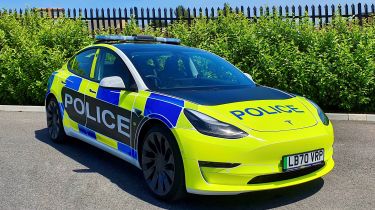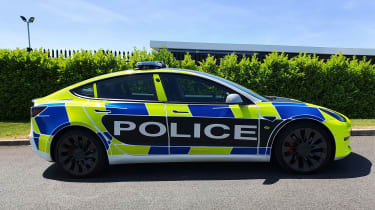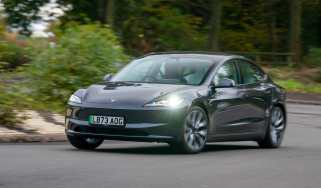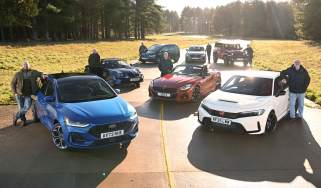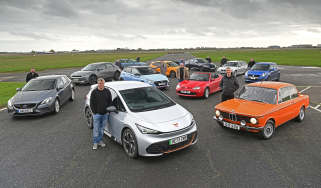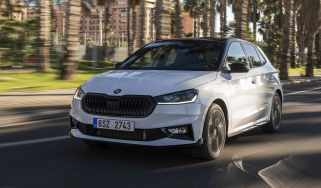Tesla Model 3 gains favour with the police
Tesla has been testing a blues-and-twos version of the Model 3 with the UK police for the past nine months – and the early results look promising
Earlier this year, Tesla launched a police liveried version of the Model 3 saloon, which it offered to the UK’s emergency services for trial and assessment. The idea was to offer police forces a viable electric patrol car ahead of the government ban on combustion-engined vehicles becoming effective in 2030.
Tesla is nine months into the programme now and the company’s emergency services lead, Max Toozs-Hobson, has released some of the company’s findings. The early reports look encouraging, too – according to Tesla, the battenburg edition Model 3 has been welcomed by the UK’s police forces and the public alike.
The most important issue the police face in making the switch to EV patrol cars is range, but Toozs-Hobson insists this hasn’t been much of an issue during the trial phase. He said: “It's achievable to do over 200 miles of Blue Light advance driving with the Model 3.
“The average blue light run in the UK is about 7-15 minutes. The longest run in our cars has been over four hours on active deployment under advanced driving conditions.”
Tesla is also adamant that officers can recharge their cars on shift with minimal disruption. Toozs-Hobson said: “Last week, I joined a traffic unit who got into the car with just 80 miles of range. We stopped at a V3 supercharger and gained 70 per cent power in less than 20 minutes. This gave us another 5–6 hours of driving for the shift. Plus this fill up cost less than £20.”
Toozs-Hobson also lists a few other benefits, such as minimal brake and tyre wear, low maintenance costs and good public response. He even says the police auxiliary systems (such as the ANPR cameras and strobe lights) have a minimal impact on the car’s range, draining “less than a few miles” from the car’s maximum figure.
Tesla hasn’t confirmed any precise specifications for the Model 3 police test vehicle, but the wheels would suggest it’s the all-wheel drive Performance variant. That means it’ll have a range of up to 352 miles, a 0–60mph time of just 3.1 seconds and a top speed of 152mph.
The move to trial the Model 3 as an emergency response vehicle in Britain mirrors the car’s deployment in the United States with several police forces. However, Tesla is yet to confirm whether any UK forces are interested in taking the EV onto their fleets full-time.
Currently, electric police cars in Britain are rare, but they’re growing in popularity. Gloucester Constabulary added 75 pure-electric vehicles to its fleet in early 2020, although none of the cars – most of which are Nissan Leafs – have been used in an emergency response role.
Similarly, the Metropolitan Police has deployed a fleet of BMW i3s around the streets of the capital. The force also owns 11 hydrogen fuel-cell-powered Toyota Mirais.
Now click here to read our guide to buying an ex-police car…
Find a car with the experts

